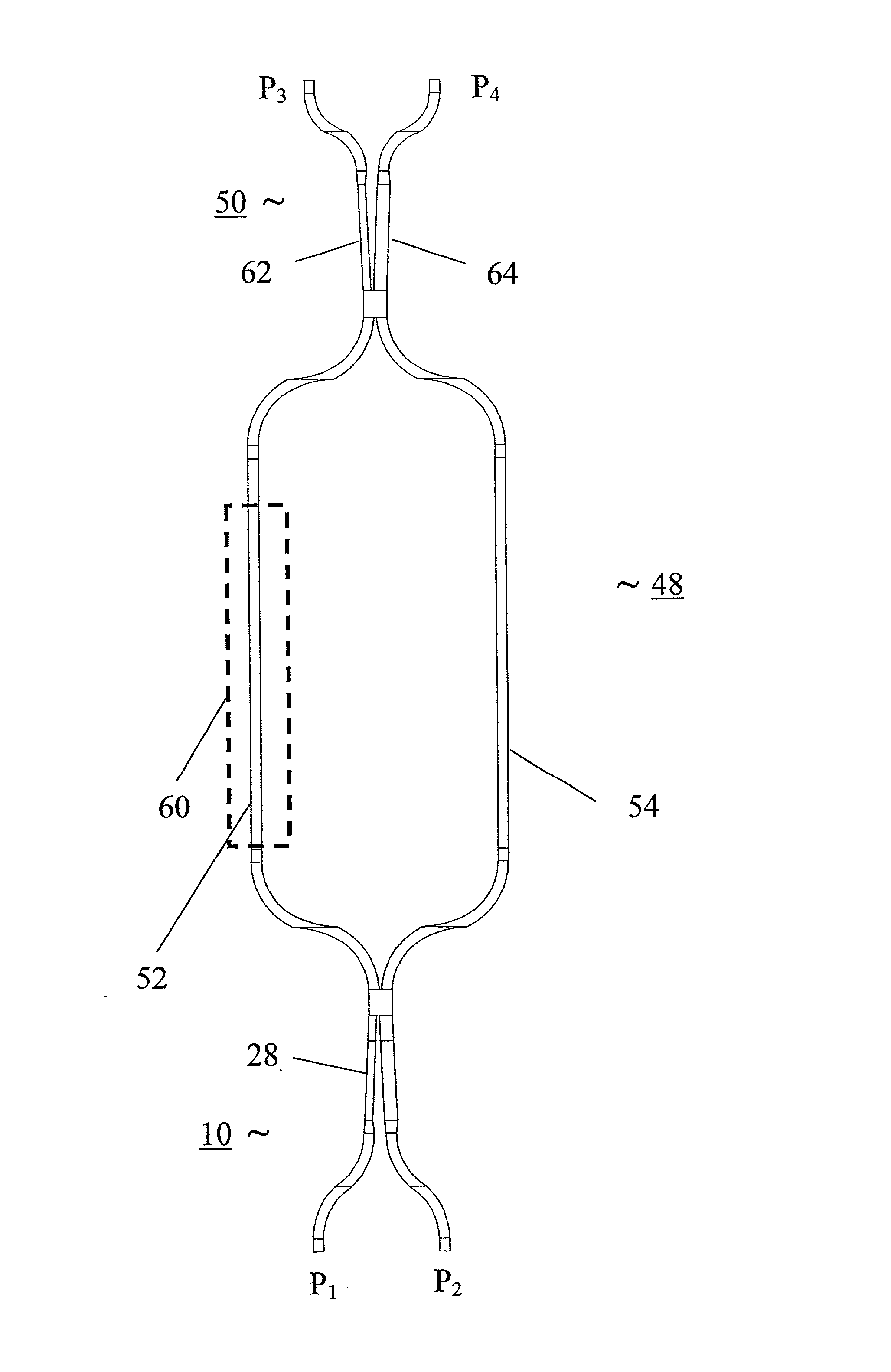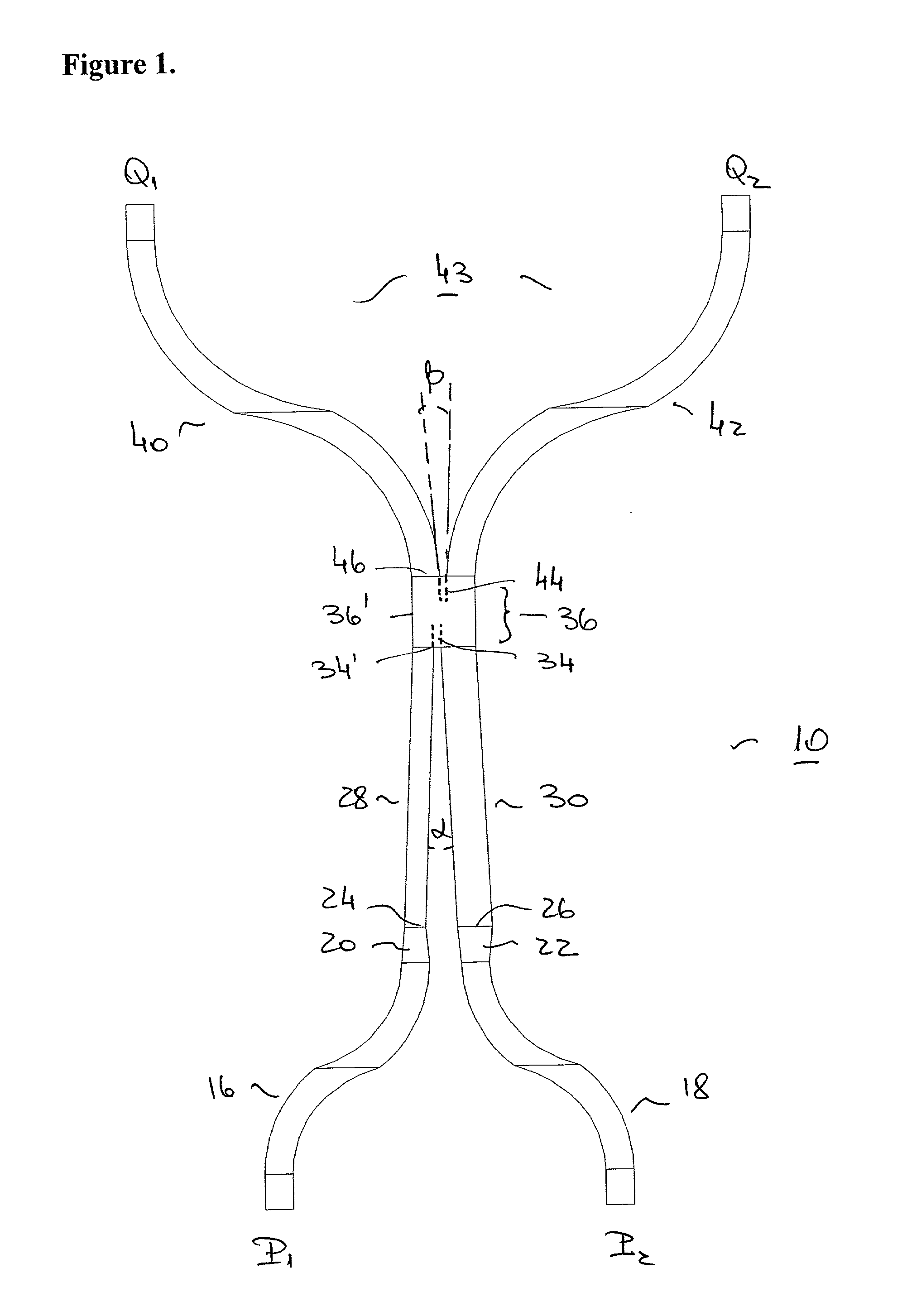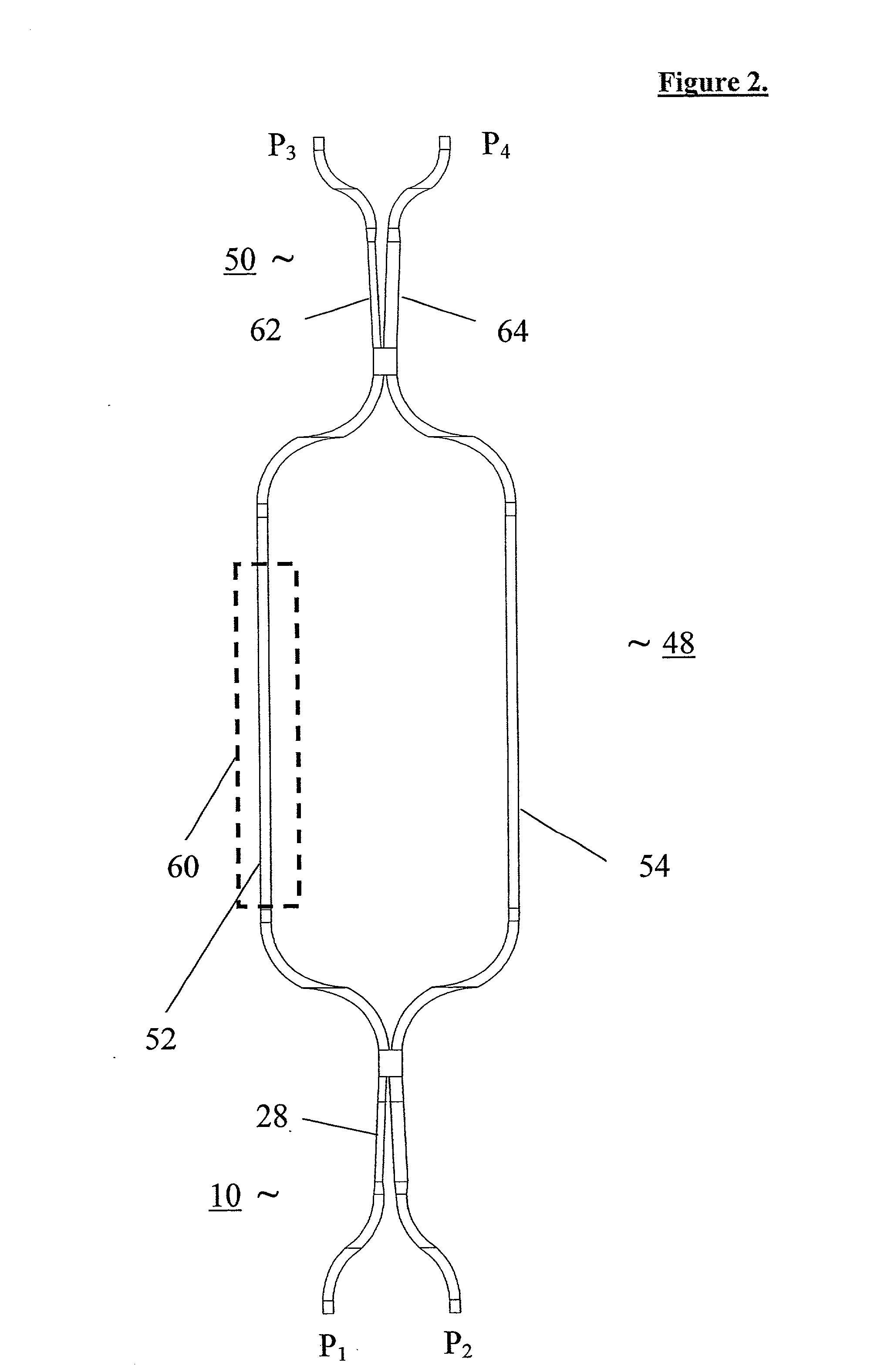High-tolerance broadband-optical switch in planar lightwave circuits
a technology of optical switch and high-tolerance broadband, which is applied in the direction of optics, optical light guides, instruments, etc., can solve the problems of high electrical power consumption, complicated control and production of broadband mzi optical switches
- Summary
- Abstract
- Description
- Claims
- Application Information
AI Technical Summary
Benefits of technology
Problems solved by technology
Method used
Image
Examples
Embodiment Construction
[0042] A broadband optical switch according to the present invention was designed and fabricated in Silica (channel buried waveguides) on Silicon (substrate) with .DELTA.n=0.75% (between the core and the clad of the waveguides, the clad being also silica but with a different refractive index) utilizing the thermo-optic effect. The length of the 2.times.2 configuration (FIG. 2) was about 20 mm, whereas the length of the 1.times.2 configuration (FIG. 3) was about 15 mm. The width difference between the wide and narrow legs of the adiabatic couplers in each switch was typically about 0.4 micrometer, while the typical width of each leg was around 4 micrometer (e.g one was typically 3.8 micrometer, the other 4.2 micrometer). The actual leg width is less important than the width difference. Both devices provided similar performances, except for a better extinction ratio (ER) of the 2.times.2 configuration at the cross output. The ER results (theoretical and experimental) of the 2.times.2 ...
PUM
 Login to View More
Login to View More Abstract
Description
Claims
Application Information
 Login to View More
Login to View More - R&D
- Intellectual Property
- Life Sciences
- Materials
- Tech Scout
- Unparalleled Data Quality
- Higher Quality Content
- 60% Fewer Hallucinations
Browse by: Latest US Patents, China's latest patents, Technical Efficacy Thesaurus, Application Domain, Technology Topic, Popular Technical Reports.
© 2025 PatSnap. All rights reserved.Legal|Privacy policy|Modern Slavery Act Transparency Statement|Sitemap|About US| Contact US: help@patsnap.com



